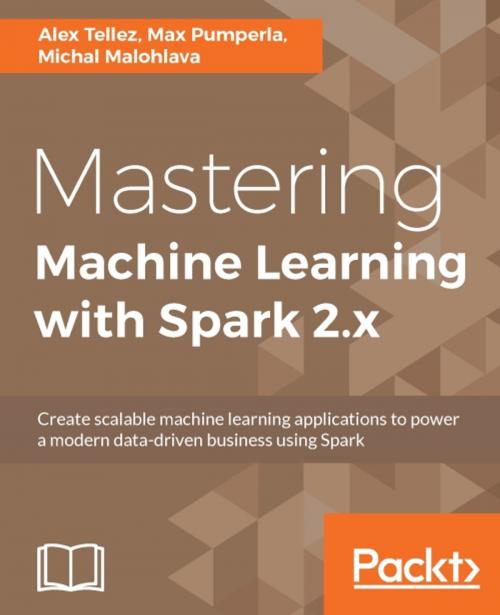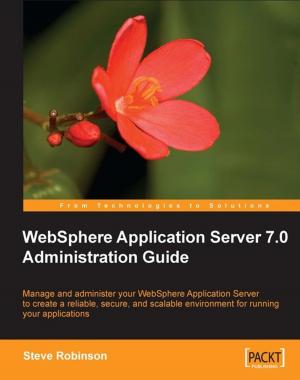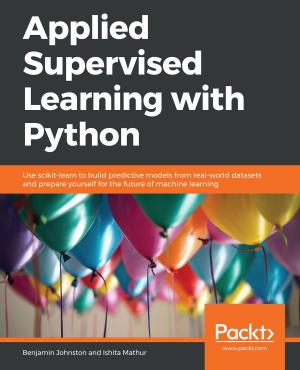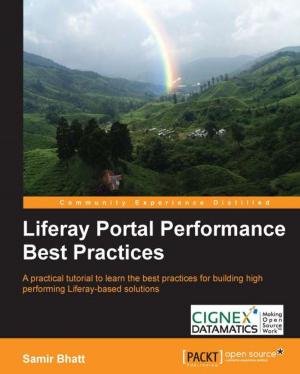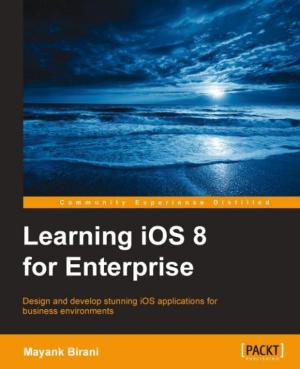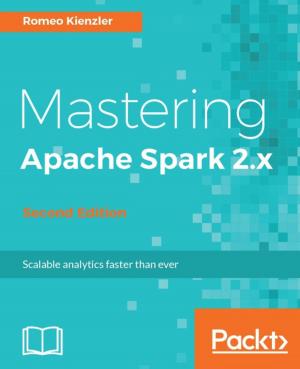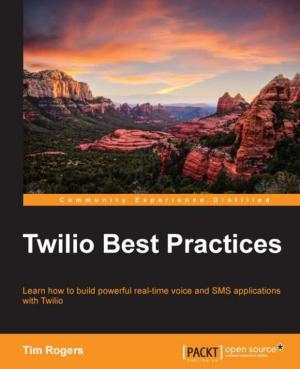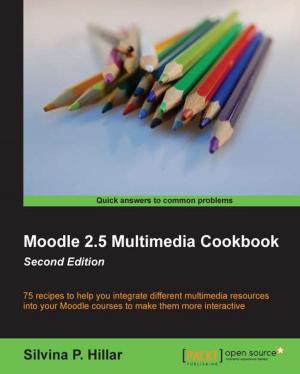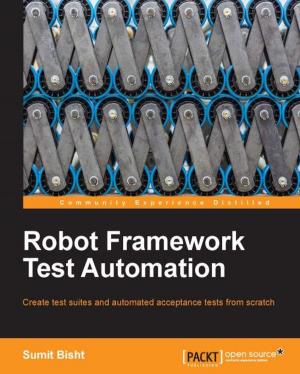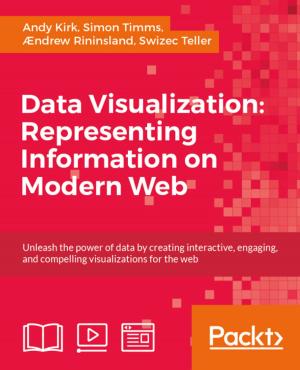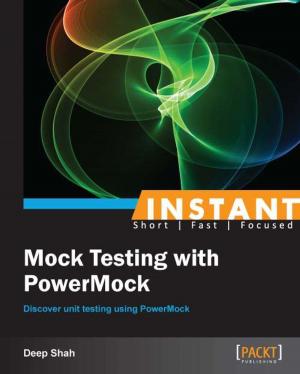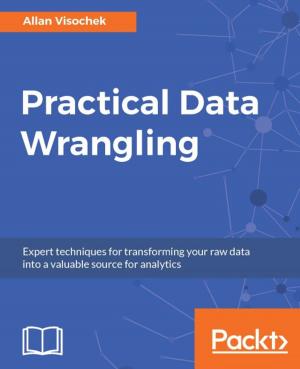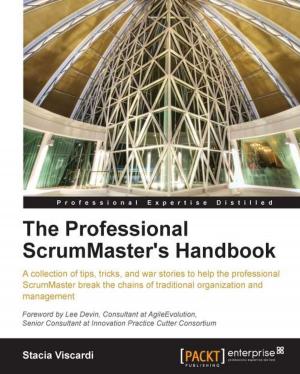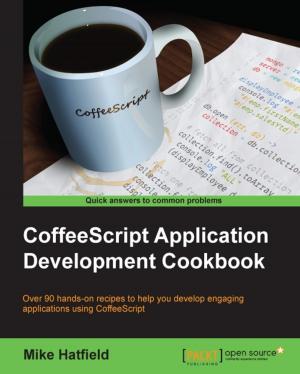Mastering Machine Learning with Spark 2.x
Nonfiction, Computers, Database Management, Data Processing| Author: | Alex Tellez, Michal Malohlava, Max Pumperla | ISBN: | 9781785282416 |
| Publisher: | Packt Publishing | Publication: | August 31, 2017 |
| Imprint: | Packt Publishing | Language: | English |
| Author: | Alex Tellez, Michal Malohlava, Max Pumperla |
| ISBN: | 9781785282416 |
| Publisher: | Packt Publishing |
| Publication: | August 31, 2017 |
| Imprint: | Packt Publishing |
| Language: | English |
Unlock the complexities of machine learning algorithms in Spark to generate useful data insights through this data analysis tutorial
About This Book
- Process and analyze big data in a distributed and scalable way
- Write sophisticated Spark pipelines that incorporate elaborate extraction
- Build and use regression models to predict flight delays
Who This Book Is For
Are you a developer with a background in machine learning and statistics who is feeling limited by the current slow and “small data” machine learning tools? Then this is the book for you! In this book, you will create scalable machine learning applications to power a modern data-driven business using Spark. We assume that you already know the machine learning concepts and algorithms and have Spark up and running (whether on a cluster or locally) and have a basic knowledge of the various libraries contained in Spark.
What You Will Learn
- Use Spark streams to cluster tweets online
- Run the PageRank algorithm to compute user influence
- Perform complex manipulation of DataFrames using Spark
- Define Spark pipelines to compose individual data transformations
- Utilize generated models for off-line/on-line prediction
- Transfer the learning from an ensemble to a simpler Neural Network
- Understand basic graph properties and important graph operations
- Use GraphFrames, an extension of DataFrames to graphs, to study graphs using an elegant query language
- Use K-means algorithm to cluster movie reviews dataset
In Detail
The purpose of machine learning is to build systems that learn from data. Being able to understand trends and patterns in complex data is critical to success; it is one of the key strategies to unlock growth in the challenging contemporary marketplace today. With the meteoric rise of machine learning, developers are now keen on finding out how can they make their Spark applications smarter.
This book gives you access to transform data into actionable knowledge. The book commences by defining machine learning primitives by the MLlib and H2O libraries. You will learn how to use Binary classification to detect the Higgs Boson particle in the huge amount of data produced by CERN particle collider and classify daily health activities using ensemble Methods for Multi-Class Classification.
Next, you will solve a typical regression problem involving flight delay predictions and write sophisticated Spark pipelines. You will analyze Twitter data with help of the doc2vec algorithm and K-means clustering. Finally, you will build different pattern mining models using MLlib, perform complex manipulation of DataFrames using Spark and Spark SQL, and deploy your app in a Spark streaming environment.
Style and approach
This book takes a practical approach to help you get to grips with using Spark for analytics and to implement machine learning algorithms. We'll teach you about advanced applications of machine learning through illustrative examples. These examples will equip you to harness the potential of machine learning, through Spark, in a variety of enterprise-grade systems.
Unlock the complexities of machine learning algorithms in Spark to generate useful data insights through this data analysis tutorial
About This Book
- Process and analyze big data in a distributed and scalable way
- Write sophisticated Spark pipelines that incorporate elaborate extraction
- Build and use regression models to predict flight delays
Who This Book Is For
Are you a developer with a background in machine learning and statistics who is feeling limited by the current slow and “small data” machine learning tools? Then this is the book for you! In this book, you will create scalable machine learning applications to power a modern data-driven business using Spark. We assume that you already know the machine learning concepts and algorithms and have Spark up and running (whether on a cluster or locally) and have a basic knowledge of the various libraries contained in Spark.
What You Will Learn
- Use Spark streams to cluster tweets online
- Run the PageRank algorithm to compute user influence
- Perform complex manipulation of DataFrames using Spark
- Define Spark pipelines to compose individual data transformations
- Utilize generated models for off-line/on-line prediction
- Transfer the learning from an ensemble to a simpler Neural Network
- Understand basic graph properties and important graph operations
- Use GraphFrames, an extension of DataFrames to graphs, to study graphs using an elegant query language
- Use K-means algorithm to cluster movie reviews dataset
In Detail
The purpose of machine learning is to build systems that learn from data. Being able to understand trends and patterns in complex data is critical to success; it is one of the key strategies to unlock growth in the challenging contemporary marketplace today. With the meteoric rise of machine learning, developers are now keen on finding out how can they make their Spark applications smarter.
This book gives you access to transform data into actionable knowledge. The book commences by defining machine learning primitives by the MLlib and H2O libraries. You will learn how to use Binary classification to detect the Higgs Boson particle in the huge amount of data produced by CERN particle collider and classify daily health activities using ensemble Methods for Multi-Class Classification.
Next, you will solve a typical regression problem involving flight delay predictions and write sophisticated Spark pipelines. You will analyze Twitter data with help of the doc2vec algorithm and K-means clustering. Finally, you will build different pattern mining models using MLlib, perform complex manipulation of DataFrames using Spark and Spark SQL, and deploy your app in a Spark streaming environment.
Style and approach
This book takes a practical approach to help you get to grips with using Spark for analytics and to implement machine learning algorithms. We'll teach you about advanced applications of machine learning through illustrative examples. These examples will equip you to harness the potential of machine learning, through Spark, in a variety of enterprise-grade systems.
